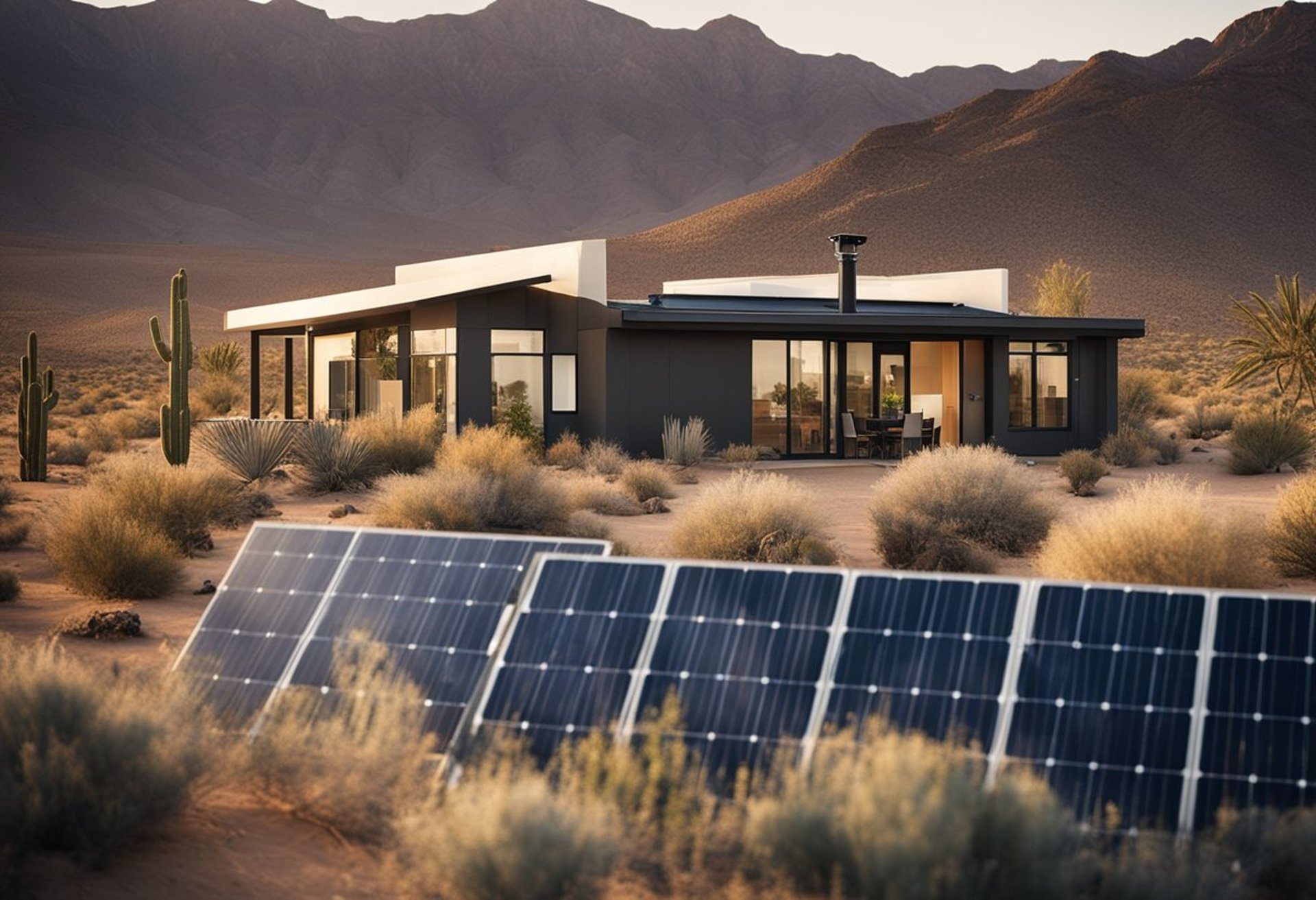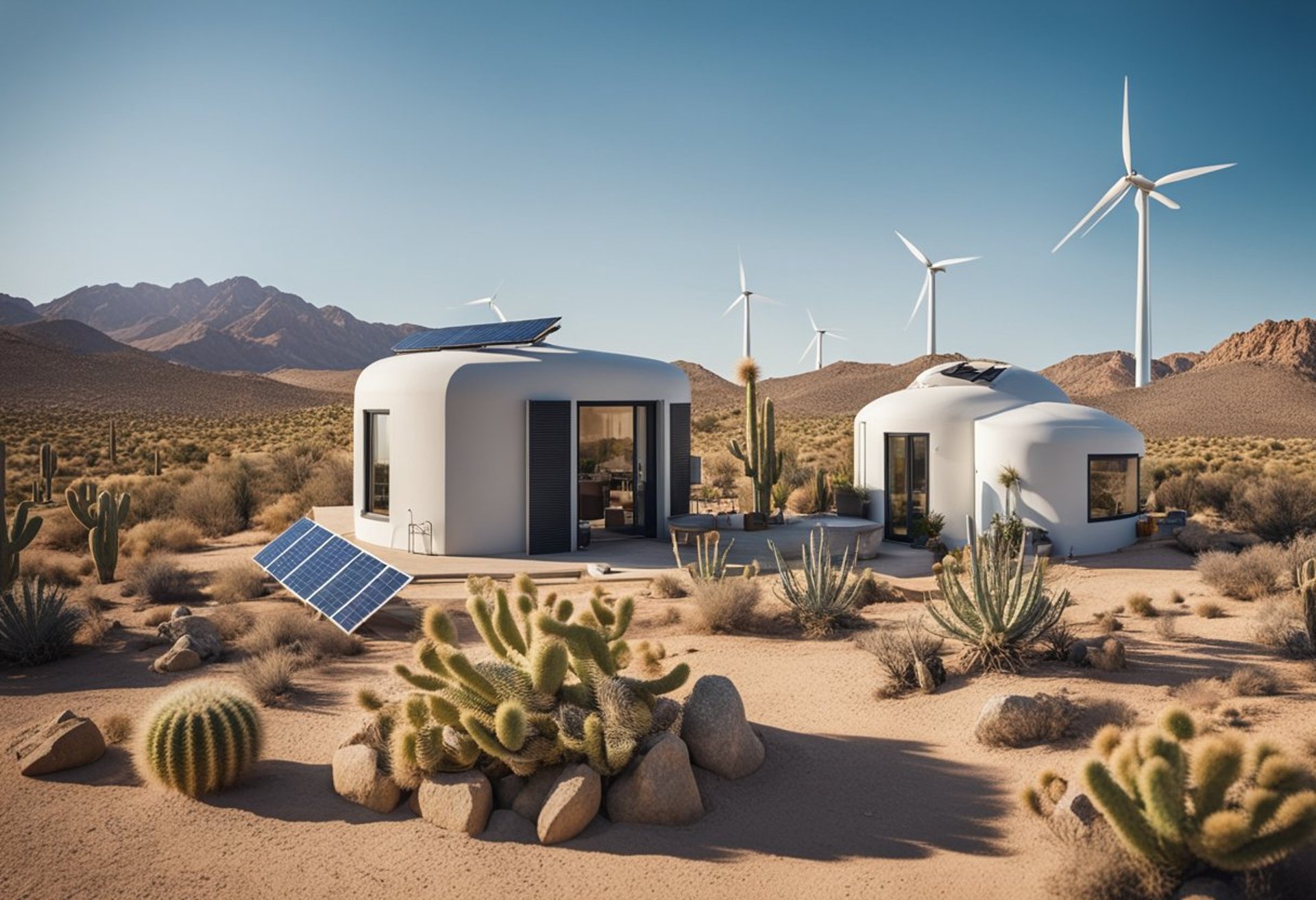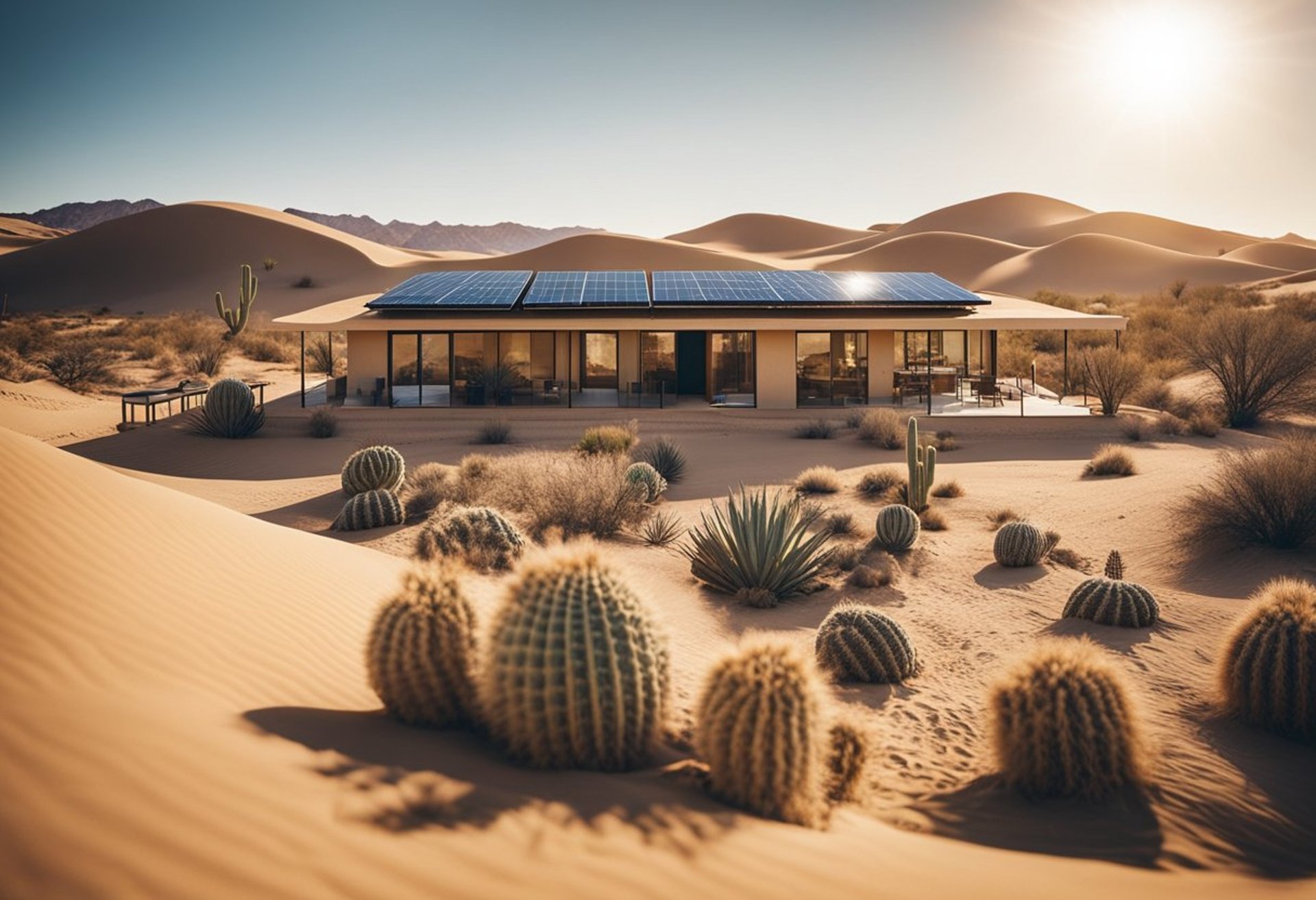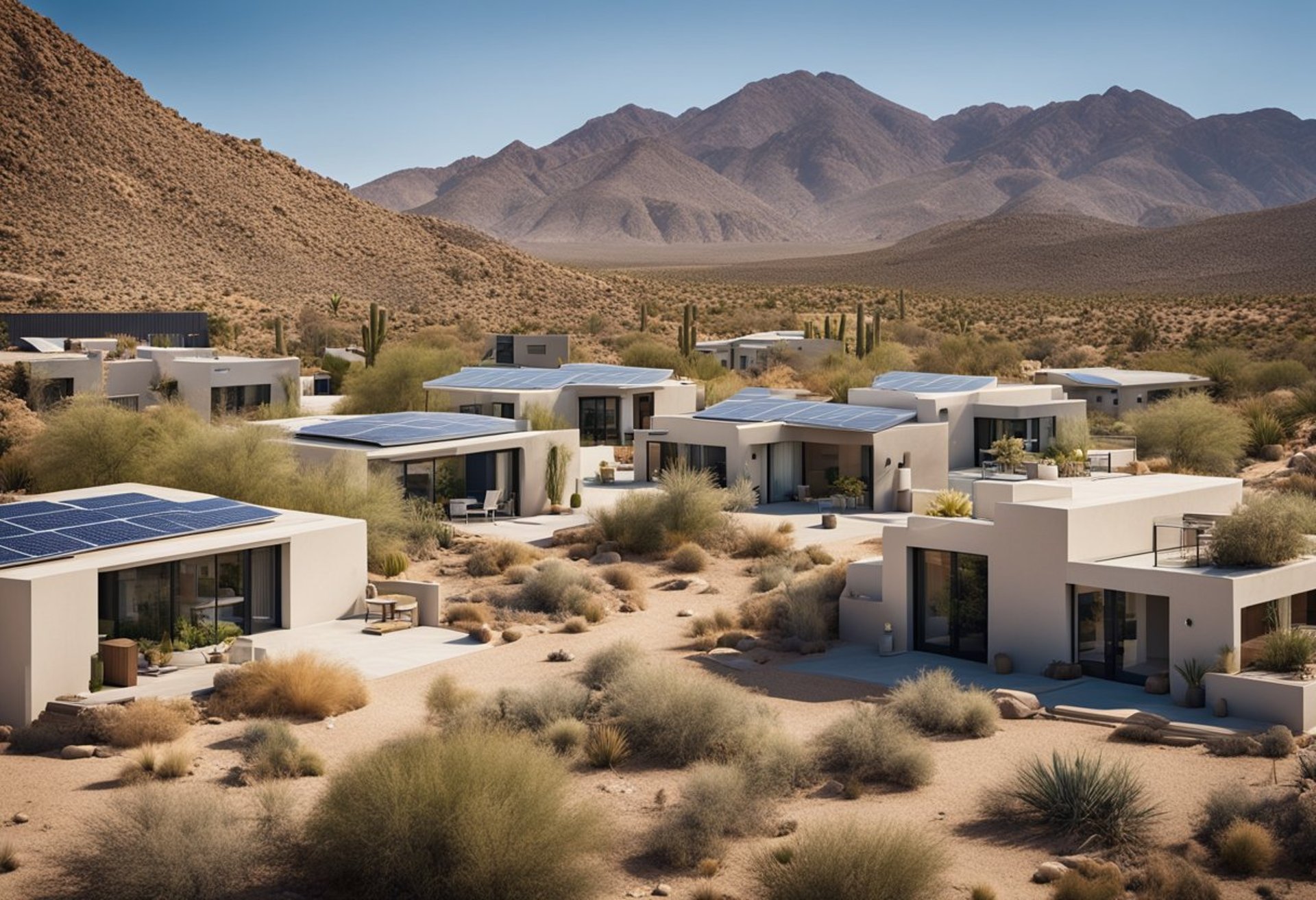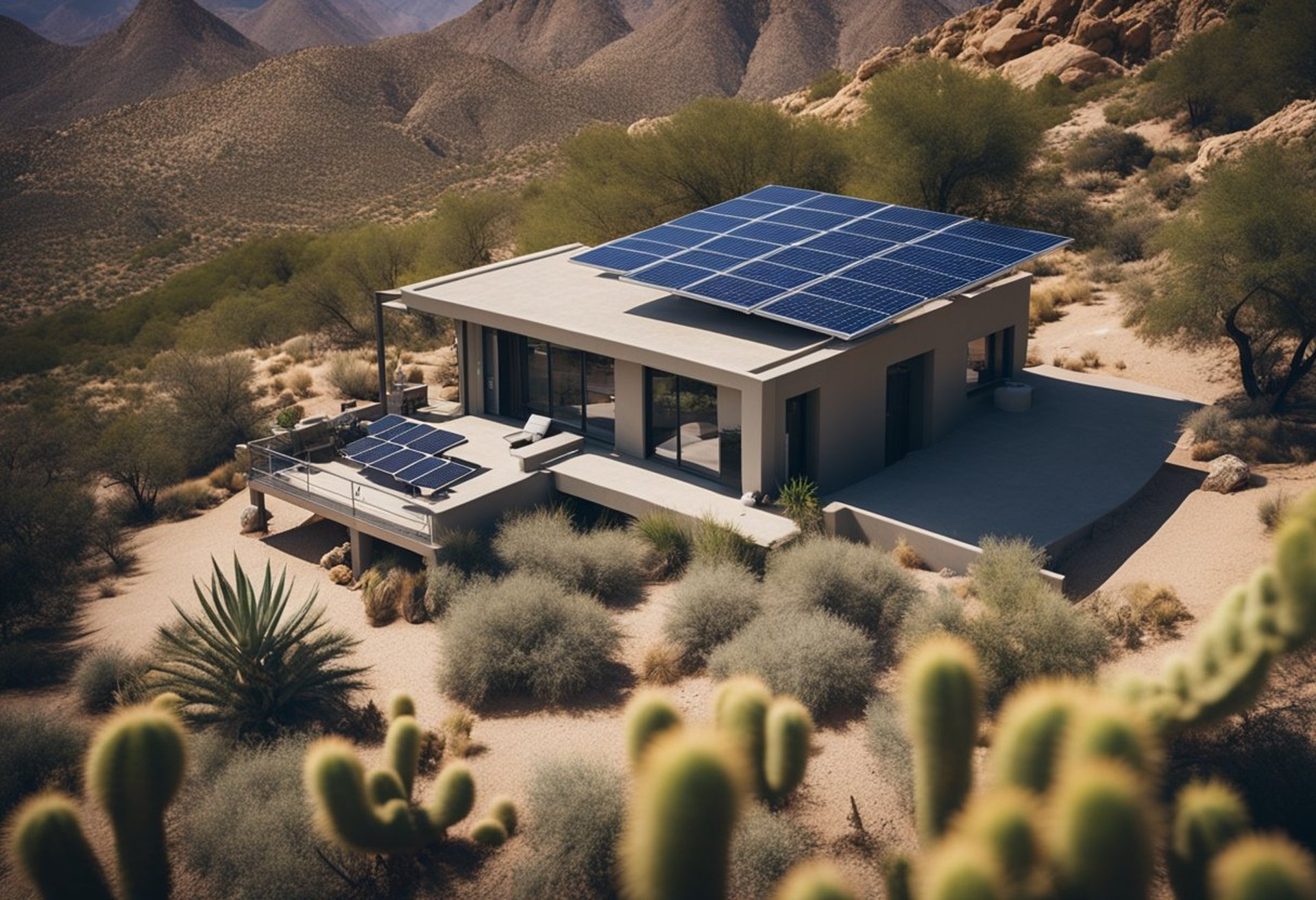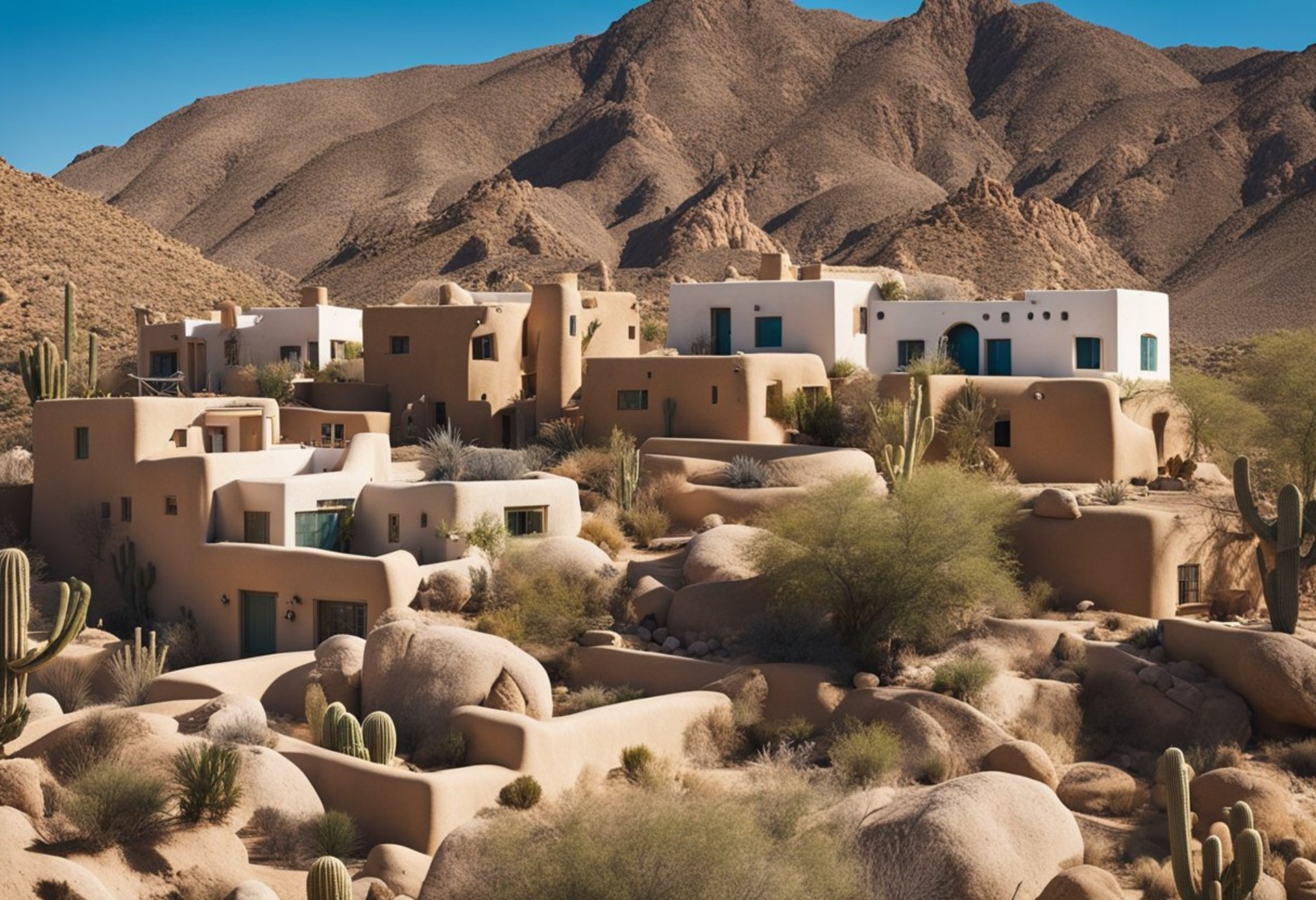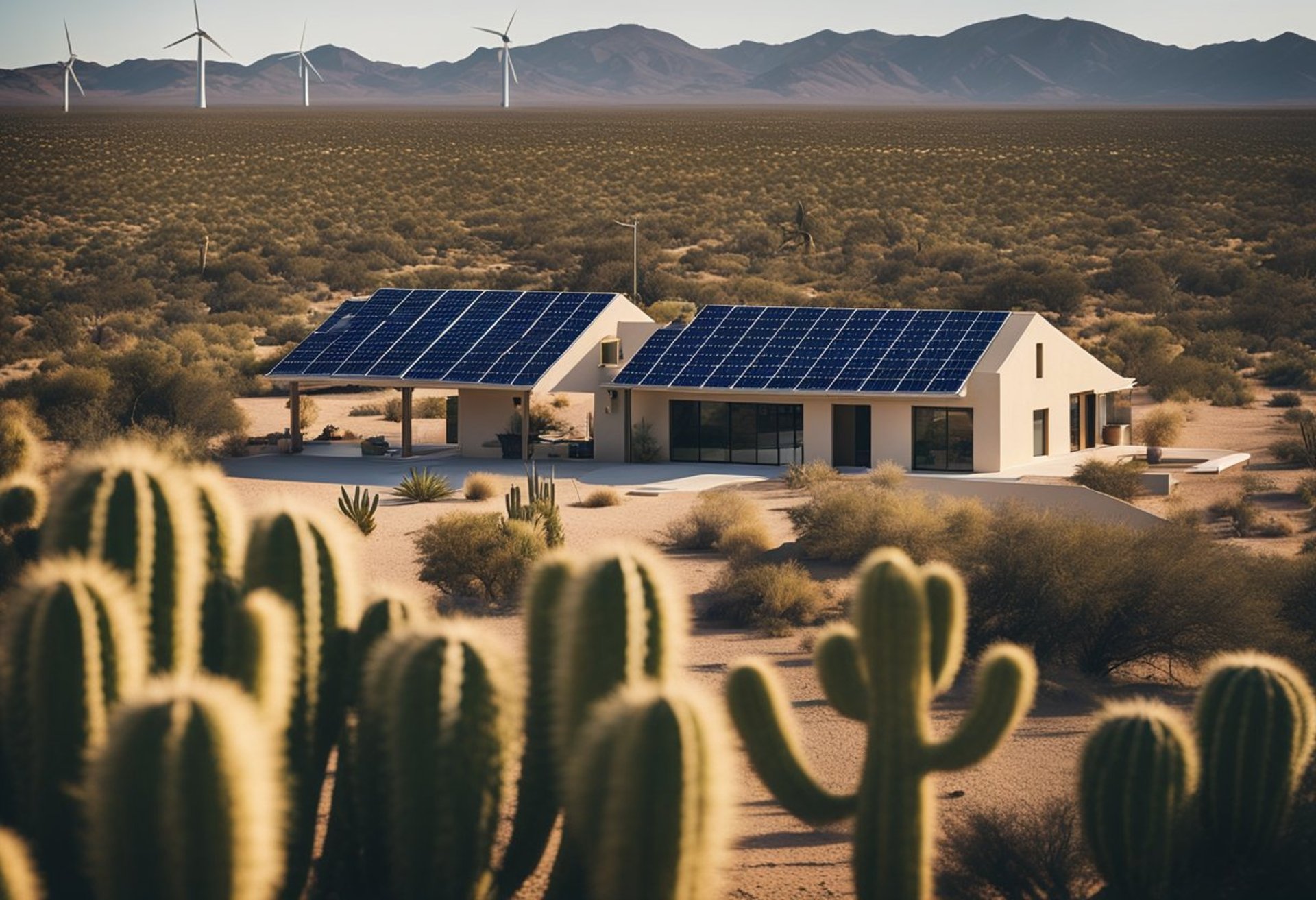Off the Grid Desert Homes: Embracing Sustainable Living in Remote Locations
Living off the grid in the desert offers a unique blend of tranquility and self-sufficiency. Many are drawn to this lifestyle for its promise of independence from conventional utilities and urban distractions. Off the grid desert homes provide sustainable solutions for energy, water, and comfort, allowing individuals to embrace nature while enjoying modern conveniences.
Off the Grid Desert Homes: Embracing Sustainable Living in Remote Locations
Living off the grid in the desert offers a unique blend of tranquility and self-sufficiency. Many are drawn to this lifestyle for its promise of independence from conventional utilities and urban distractions. Off the grid desert homes provide sustainable solutions for energy, water, and comfort, allowing individuals to embrace nature while enjoying modern conveniences.
Designing a home in such an arid environment requires careful planning and consideration. Factors such as climate, available resources, and sustainable practices significantly influence construction methods and interior setups. This lifestyle promotes adaptability and innovation, encouraging residents to make the most of their surroundings.
A move to an off-the-grid desert home can be both liberating and challenging. Individuals must navigate legal requirements and building codes while embracing a new way of life. For many, this journey leads to greater fulfillment and a deeper connection with the land.
Key Takeaways
Off the grid living emphasizes self-sufficiency and sustainability.
Design and construction must consider desert conditions for comfort.
Legal knowledge is essential for building and living off the grid.
Understanding Off the Grid Living
Off the grid living signifies a lifestyle that aims for self-sufficiency and independence from public utilities. This approach often involves various techniques for managing resources like water, power, and waste, making it particularly relevant in desert environments.
Defining 'Off the Grid'
'Off the grid' refers to living in a manner that does not rely on public utilities such as electricity, gas, or water supply. Residents often generate their own energy through renewable sources like solar panels or wind turbines. Water may be sourced from wells, rainwater harvesting, or nearby bodies of water.
In desert areas, this definition becomes crucial. Sustainable practices, such as using solar power and efficient water use, are vital. Off the grid cabins often incorporate features like passive heating and cooling systems, maximizing natural advantages while minimizing environmental impact.
Benefits and Challenges
Living off the grid offers numerous benefits, including reduced utility costs and a minimal environmental footprint. Self-sufficiency leads to greater control over resources, often enhancing quality of life. Many individuals find peace and satisfaction in a simpler lifestyle, embracing nature and independent living.
Conversely, challenges include initial setup costs and ongoing maintenance. Off the grid living demands expertise in areas such as solar energy technology and water management. Residents must be prepared for potential hardships, such as limited access to emergency services and challenges related to extreme weather conditions, particularly in a desert setting.
Many off the grid cabin ideas aim to address these challenges through innovative design and technology, ensuring sustainability and comfort in remote areas.
Planning Your Off the Grid Desert Home
Planning an off-the-grid desert home requires careful consideration of various factors. Choosing the right location, assessing available resources, and understanding the sustainable practices are critical in ensuring a successful build.
Choosing a Location
The location dictates many aspects of off-grid living. Ideal sites should provide access to natural resources, scenic views, and favorable climate conditions.
When selecting a site, consider the following:
Proximity to Water Sources: Access to groundwater or nearby rivers is crucial.
Sun Exposure: Adequate sunlight maximizes solar panel efficiency.
Soil Quality: Good soil supports potential gardening and waste management needs.
Diverse terrain can offer natural barriers, enhancing privacy and protection from harsh weather.
Assessing Resources and Accessibility
Before moving forward, it’s essential to evaluate available resources. This includes both natural and man-made options.
Key resources to assess:
Water: Identify how to locate or harvest water, such as rainwater collection systems.
Building Materials: Local materials reduce transport costs and environmental impact.
Energy Sources: Consider solar, wind, or generators based on location needs.
Accessibility impacts construction logistics and long-term living. Access roads should be reliable to support transporting materials and occasional visitors.
Sustainability and Environmental Impact
Designing a sustainable home is paramount. Implementing eco-friendly strategies minimizes the environmental footprint.
Important considerations include:
Energy Efficiency: Use passive solar design to reduce reliance on external energy.
Waste Management: Composting toilets and gray-water systems help maintain hygiene while conserving resources.
Native Landscaping: Employing drought-resistant plants lowers water needs and maintenance.
Each design choice can contribute to a sustainable lifestyle. Prioritizing environment-friendly materials and techniques leads to a home that aligns well with off-grid philosophies.
Designing Off the Grid Desert Homes
Creating off the grid desert homes involves strategic architectural planning, energy efficiency measures, and innovative water management systems. Each aspect plays a crucial role in ensuring sustainability and comfort in a challenging environment.
Architectural Considerations
Designing an off the grid desert home requires a deep understanding of local conditions. The materials selected must withstand harsh weather while providing insulation. Options like adobe, rammed earth, and straw bale construction offer natural thermal mass.
Building orientation is essential to maximize natural light and reduce heat gain. Large overhangs can provide shade during the hottest months. Incorporating small windows on the sunniest sides helps maintain cooler indoor temperatures.
Additionally, rooftop designs should include features for potential solar panel installation. The aesthetic appeal can blend with the surroundings, using earthy tones and textures that reflect the desert landscape.
Energy Efficiency and Renewable Resources
Energy efficiency is vital for off the grid homes. Utilizing solar panels can significantly decrease reliance on external power sources. Designers often recommend solar power systems paired with battery storage.
Incorporating energy-efficient appliances further reduces energy consumption. LED lighting and Energy Star-rated devices are commonly used in these homes. Additionally, the strategic placement of windows encourages natural ventilation, lessening the need for air conditioning.
Wind turbines are another renewable resource option. In some desert locations, they can provide a reliable energy source alongside solar panels.
Water Collection and Waste Management
Water management in off the grid desert homes is critical. Rainwater harvesting systems are commonly installed to capture and store water. Roof designs can facilitate the collection of rain, which is filtered and stored for various household uses.
Greywater recycling systems are also popular. They allow for the repurposing of water from sinks and showers for irrigation purposes.
Effective waste management strategies are necessary to maintain sustainability. Composting toilets and biogas systems minimize waste while providing natural fertilizers. Together, these systems contribute to a self-sufficient lifestyle in a desert environment.
Interior Set-Up for Comfort and Functionality
Creating an interior space for an off-the-grid desert home involves careful planning to maximize comfort and efficiency. Key areas include optimizing space, designing an off-grid kitchen, providing practical bathroom solutions, and establishing cozy living and sleeping areas.
Optimizing Space
In a desert home, space optimization is crucial. Using multifunctional furniture can help eliminate clutter. For example, a fold-out table can serve as both a dining space and a work area.
Storage solutions should include vertical shelves and under-bed compartments. This allows for the efficient use of limited floor space. Incorporating light colors can enhance the sense of openness.
Strategically placing mirrors can also make the space feel larger. It reflects natural light and adds dimension to smaller areas. These elements contribute to a more spacious and organized living environment.
Off the Grid Kitchen Design
An off-grid kitchen in a desert home focuses on resource efficiency. Installing propane or solar-powered appliances can significantly reduce energy consumption. Countertop space should be maximized by using corner shelves or hanging storage racks.
Using durable materials that can withstand the elements is advisable. Consider stainless steel or treated wood for longevity. A well-designed kitchen should also include a composting system, which aids in waste reduction.
To facilitate cooking, a well-planned layout will optimize workflow. A prep area, cooking zone, and storage should be easily accessible. This arrangement allows for efficient meal preparation even in off-grid conditions.
Bathroom Solutions
The bathroom in an off-grid desert home requires thoughtful consideration. Composting toilets offer an eco-friendly alternative to traditional plumbing. These systems are low-maintenance and reduce water usage.
Showers can utilize water-saving fixtures and traditional rainwater collection systems. Designing the bathroom to include storage for essentials will help keep it organized. Shelving above the toilet can maximize space without sacrificing function.
Using natural materials can add aesthetic appeal while remaining functional. Stone or tile flooring to resist moisture is a practical choice. Implementing proper ventilation ensures a fresh atmosphere in the bathroom.
Living and Sleeping Areas
The living and sleeping areas should be designed for comfort while maximizing utility. A cozy seating arrangement can be created using sectional sofas or built-in benches. Such configurations foster relaxation and social interaction.
Bedding solutions must prioritize warmth and simplicity. Using layered bedding offers adaptability for changing temperatures. Storage under the bed can help keep these areas tidy.
Natural light is essential in these spaces. Large windows or strategically placed skylights can enhance comfort. Additionally, using heavy curtains can provide insulation for cooler nights. This balance of functionality and comfort creates a welcoming home.
Building Techniques and Materials
When constructing off-grid desert homes, specific techniques and materials greatly impact sustainability and environmental integration. Traditional and modern building methods both offer unique benefits. The choice of materials plays a crucial role in energy efficiency, while insulation and temperature control ensure comfort in extreme conditions.
Traditional Vs. Modern Methods
Traditional building methods often utilize local materials, fitting harmoniously into the desert landscape. Adobe and rammed earth are popular choices, providing excellent thermal mass. Such techniques have been used for centuries and allow for natural temperature regulation.
Modern methods, on the other hand, often incorporate prefabricated panels and advanced insulation. These techniques aim for swift construction and energy efficiency. For instance, insulated concrete forms can provide strength and durability while keeping environmental impact minimal. Each method requires balancing aesthetic values with practical needs.
Choosing Sustainable Materials
Sustainability is critical when selecting materials for off-grid homes. Natural materials like straw bale, bamboo, and reclaimed wood contribute to lowered environmental footprints. Using materials with low embodied energy also supports eco-friendly construction practices.
Concrete remains a popular choice due to its availability, but its production has a significant carbon footprint. Alternatives such as earthbags or rammed earth can be valuable for reducing waste and promoting sustainability. Each material's longevity and maintenance requirements should also factor into decision-making.
Insulation and Temperature Control
In desert climates, effective insulation is vital for energy efficiency and comfort. Materials such as spray foam, cellulose, or fiberglass offer varying insulation values. Each provides a degree of thermal resistance and air sealing.
Design choices, including earth-sheltering or strategic window placement, also enhance energy performance. Utilizing passive solar techniques can aid in maintaining comfortable indoor temperatures without relying solely on mechanical systems. Highlighting these practices allows for energy savings while encouraging a more sustainable lifestyle.
Power and Utilities for Off the Grid Homes
Off the grid homes require innovative solutions for power and utilities. Residents often utilize sustainable energy sources and efficient systems tailored to remote living. The following sections explore key systems necessary for self-sufficient energy management.
Solar Power Systems
Solar power systems are a primary energy source for off the grid homes. They harness sunlight through solar panels, converting it into electricity.
Key components include:
Solar panels: Typically mounted on rooftops or ground-mounted.
Inverters: Convert DC electricity to AC for home use.
Batteries: Store excess energy for nighttime or cloudy days.
Calculating energy needs is crucial. Homeowners often assess their daily consumption to determine the size and number of solar panels required. Additionally, net metering may allow users to sell excess power back to the grid when connected.
Wind and Geothermal Options
Wind and geothermal energy provide alternative solutions for off the grid living. Each option has unique benefits that can complement solar systems.
Wind energy relies on wind turbines that convert kinetic energy into electricity. Efficiency depends on local wind conditions and turbine height.
Geothermal energy uses the earth's constant temperature for heating and cooling. Systems typically involve:
Heat pumps: Circulate fluid through underground pipes.
Ductwork: Distributes heated or cooled air throughout the home.
These systems can reduce reliance on solar power during less sunny periods, offering a diversified energy portfolio.
Backup Power and Energy Storage
Backup power is essential for off the grid homes to ensure reliability during weather extremes or equipment failures.
Common options include:
Generators: Provide immediate power during outages.
Battery systems: Store energy for later use, such as lithium-ion or lead-acid batteries.
Energy storage systems allow homeowners to manage energy production and consumption effectively. Implementing smart energy management technology can optimize usage and extend battery life.
Considering storage capacity and discharge rates is crucial for ensuring ample energy during critical times.
Lifestyle Adaptations
Living off the grid in desert environments requires specific adjustments. Individuals must learn to manage limited resources, develop self-sufficiency skills, and build strong community networks.
Living with Limited Resources
Desert living often means limited access to water, electricity, and other utilities. Careful water conservation tactics are essential. Rainwater harvesting systems and gray water recycling can aid in managing water usage.
Energy sources may include solar panels or wind turbines. Using energy-efficient appliances and LED lighting helps reduce consumption. Planning meals around shelf-stable and locally sourced food can minimize trips to grocery stores.
Key strategies include:
Implementing strict water usage schedules
Purchasing only necessary supplies
Utilizing natural cooling techniques
Self-Sufficiency Skills
Developing self-sufficiency skills is vital for those living off the grid. Gardening skills allow for the cultivation of food, while preserving and canning techniques ensure year-round access to produce.
Basic construction and repair skills can help maintain housing and infrastructure. Knowledge of foraging and hunting can supplement diets with local edibles and protein sources.
Important skills to master:
Irrigation techniques for garden sustainability
Renewable energy system maintenance
Emergency preparedness protocols
Community and Networking
Building a community can provide critical support. Many off-grid residents form local networks for resource sharing, skill exchanges, and mutual assistance. This can include bartering goods or services, which increases self-reliance.
Participating in local events or online forums fosters relationships with like-minded individuals. Sharing knowledge about alternative technologies or survival techniques enhances collective resilience.
Benefits of community engagement include:
Access to diverse skills and resources
Opportunities for collaboration on projects
Emotional support in isolated settings
Legal Considerations and Building Codes
Before building an off-the-grid desert home, understanding the legal framework is essential. This section covers crucial permitting, zoning laws, and building codes that impact construction in desert regions.
Permitting and Zoning Laws
Permitting is a critical first step in the construction process. Local governments often require landowners to obtain permits before beginning any building project.
Key considerations include:
Zoning Regulations: These dictate what can be built and where. Some areas may have restrictions on land use or require specific permits for off-grid setups.
Setback Requirements: Minimum distances from property lines can affect the building footprint.
Environmental Impact Assessments: Some areas may necessitate studies to assess the impact on local ecosystems.
Failing to adhere to these regulations can result in fines or halting of construction.
Building Standards Compliance
Building codes are established to ensure safety and sustainability. These codes vary by jurisdiction but generally cover structural integrity, electrical systems, insulation, and waste disposal.
Main points include:
Adhering to Local Codes: Each area has unique codes, which can impact the design and materials used.
Energy Efficiency Standards: Off-grid homes often need to meet specific energy efficiency guidelines to minimize environmental impact.
Inspection Requirements: Many jurisdictions mandate inspections throughout the construction process to ensure compliance.
Non-compliance can lead to delays, additional costs, and safety hazards.
Conclusion
Off the grid desert homes provide sustainable living solutions. They offer a chance to escape urban chaos while embracing nature.
These homes often utilize renewable energy sources, reducing reliance on traditional utilities. Solar panels, wind turbines, and rainwater harvesting systems are common features.
Key Advantages:
Independence: Homeowners gain freedom from utility companies.
Sustainability: Emphasis on eco-friendly materials and practices.
Solitude: Enjoyment of peace and privacy in a remote setting.
Challenges exist, including harsh weather and potential isolation. Proper planning is essential for addressing these factors.
Desert living requires adaptation. Residents must be prepared for extreme temperatures and limited resources.
In essence, off the grid desert homes represent an appealing option for those seeking a unique lifestyle. They combine self-sufficiency with natural beauty, catering to individuals committed to sustainability and independence.

